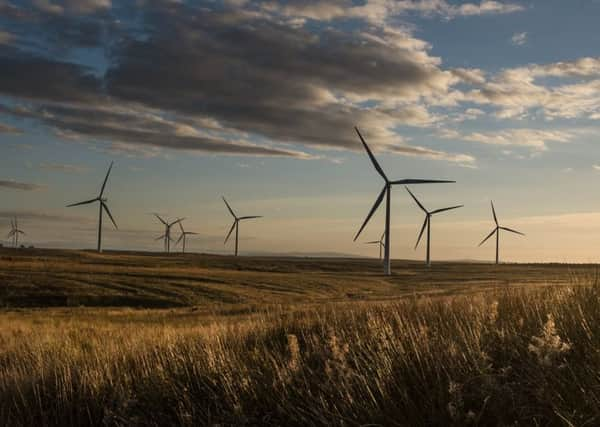Faulty cable to wind farms costs electricity users millions


Scotland on Sunday has learned that the Western Link running from Hunterston in Ayrshire to the Wirral has been offline since the spring when a fault was found during tests.
The £1 billion “interconnector” runs for 239 miles under the sea and is designed to export electricity from Scotland where turbines can generate more power than is required north of the border in windy spells.
Advertisement
Hide AdAdvertisement
Hide AdBy exporting electricity to England and Wales it was hoped that the cable would cut the amount of compensation paid to energy companies when their Scottish wind farms have to be shut down because electricity supply outstrips demand.
The cash is known as constraint payments and is given to energy companies by the National Grid. But the money ultimately comes from consumers and is added to their electricity bills.
Research conducted for Scotland on Sunday by the Renewable Energy Foundation (REF), the charity which is critical of subsidies for wind power, found that energy companies have been paid £395 million over the past eight years to stop their Scottish wind farms.
The payments have continued despite the construction of the Western Link, a joint venture involving the National Grid and Scottish Power, with around £32m shelled out this year. The interconnector began operating at 50 per cent capacity last winter. But then a fault was found in a stretch of the cable in Liverpool Bay in the spring.
According to the REF, £9.4m was paid out in constraint payments in June when the interconnector was not working. A recent posting on the Western Link website said: “cable fault was detected which caused the Link to trip”. Later the website was updated to say that it was expected it would be back in operation at full capacity in September.
John Constable of the REF, which first revealed wind constraint payments and their cost, said: “Since 2010, the total cost to consumers of constraint payments to Scottish wind power for reducing output is about £395m. The total in 2017 was a record £103m. The Western Link interconnector from Hunterston to Deeside was intended to reduce this cost, though its own £1bn capex has to be recovered from consumers, making it an expensive solution.
“The Western Link began operation in December 2017, but constraint payments have continued at a significant level. The total payments so far in 2018 [January to the present] amount to £32m, £9.4m of which was in June alone, the 12th highest monthly cost since 2010 when these payments started.
“Interconnectors were supposed to put an end to the scandal of constraint payments. This clearly isn’t happening, a fact which raises questions as to whether interconnectors, such as the Western Link, will ever fully address the problem of excess wind power in Scotland.”
Advertisement
Hide AdAdvertisement
Hide AdA spokesperson for the Western Link said: “The link has been in operation over the winter of 2017/18 helping to reduce constraint costs and was taken offline in spring 2018 for final commissioning tests.
“During this final stage of testing a cable fault was detected in Liverpool Bay. This is under repair with a plan to be through final testing in September 2018. At that stage, we expect that the Link will be operating at full capacity, delivering significant power transfer capability from Scotland to England and Wales. Although the delay is unfortunate, the Western Link will deliver benefits for power generators and consumers for decades to come.”